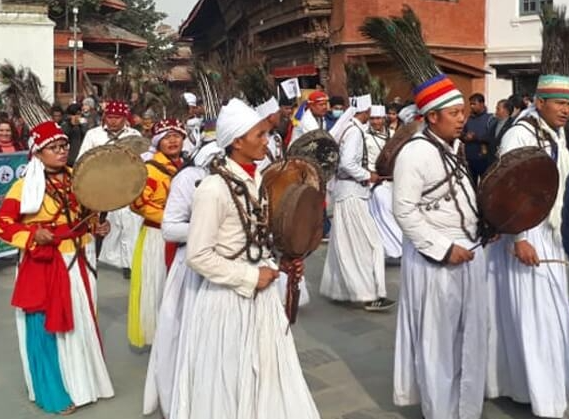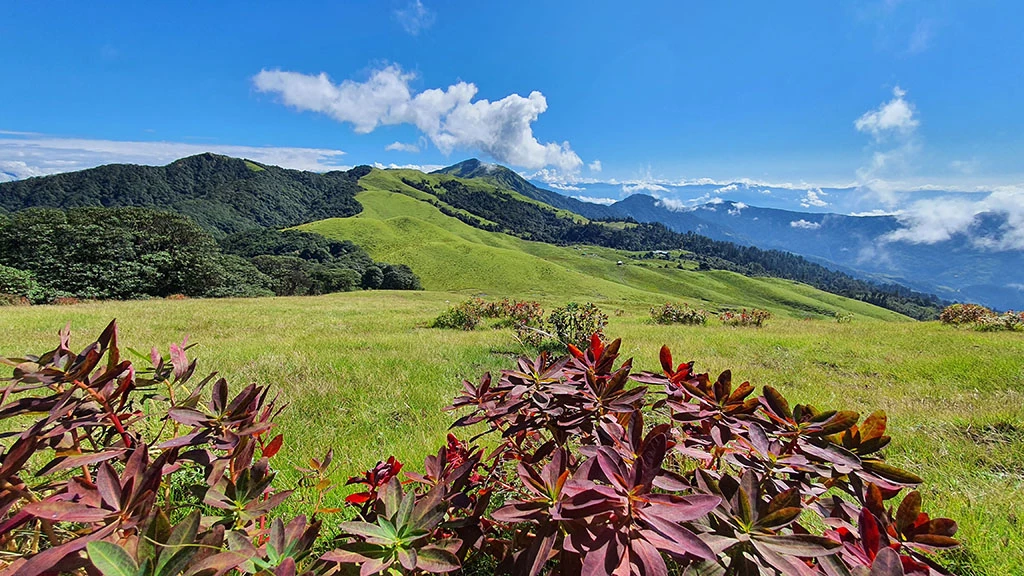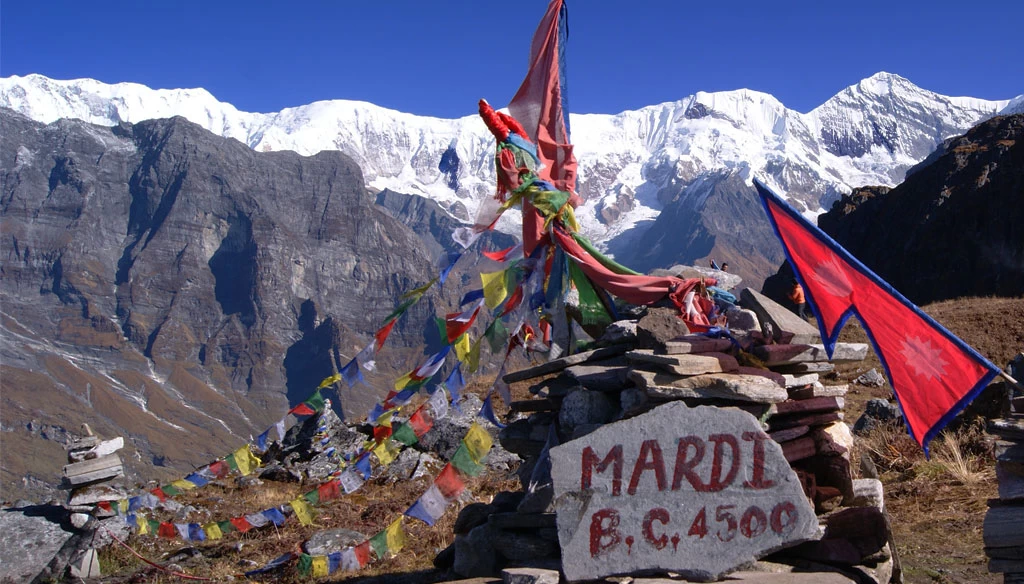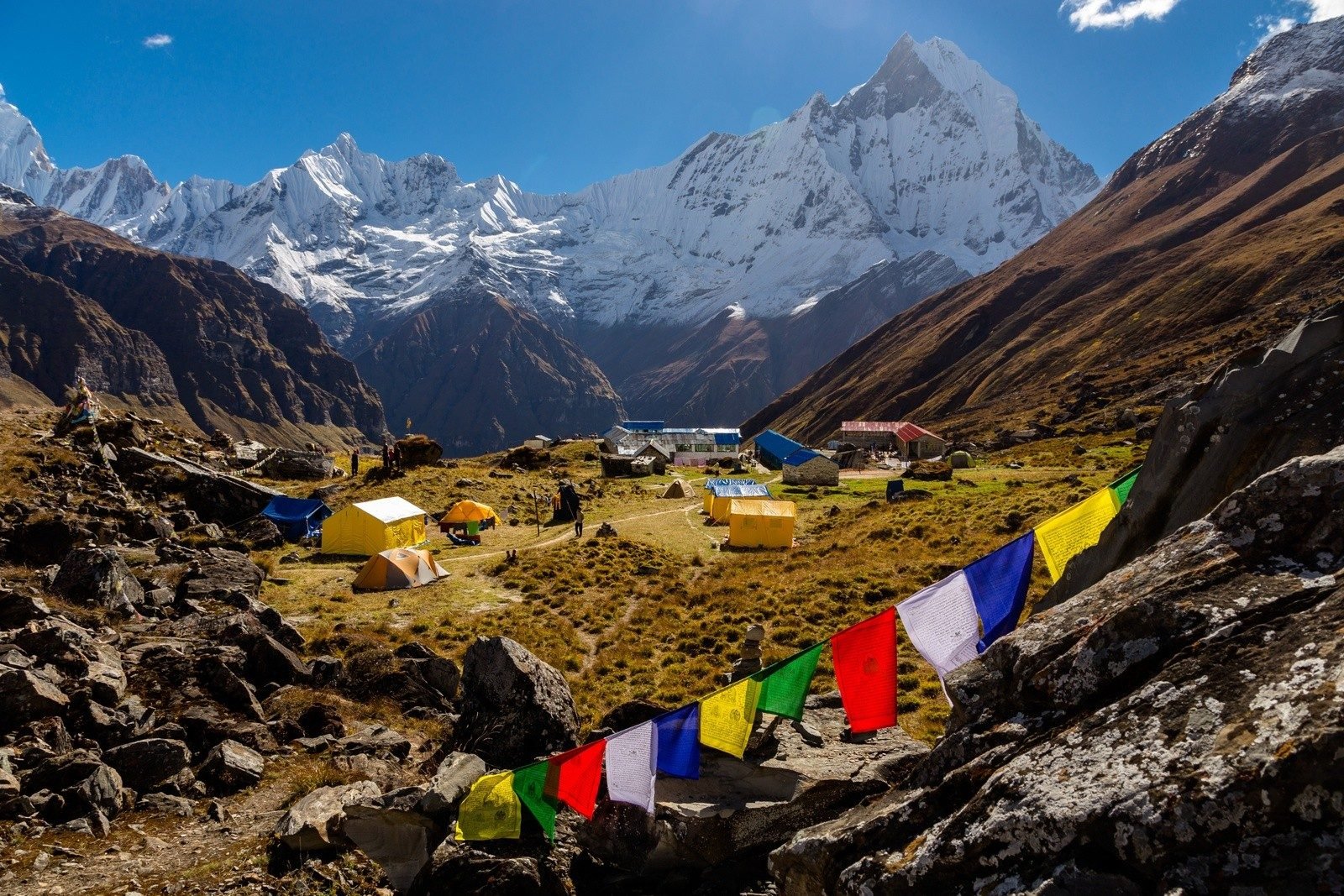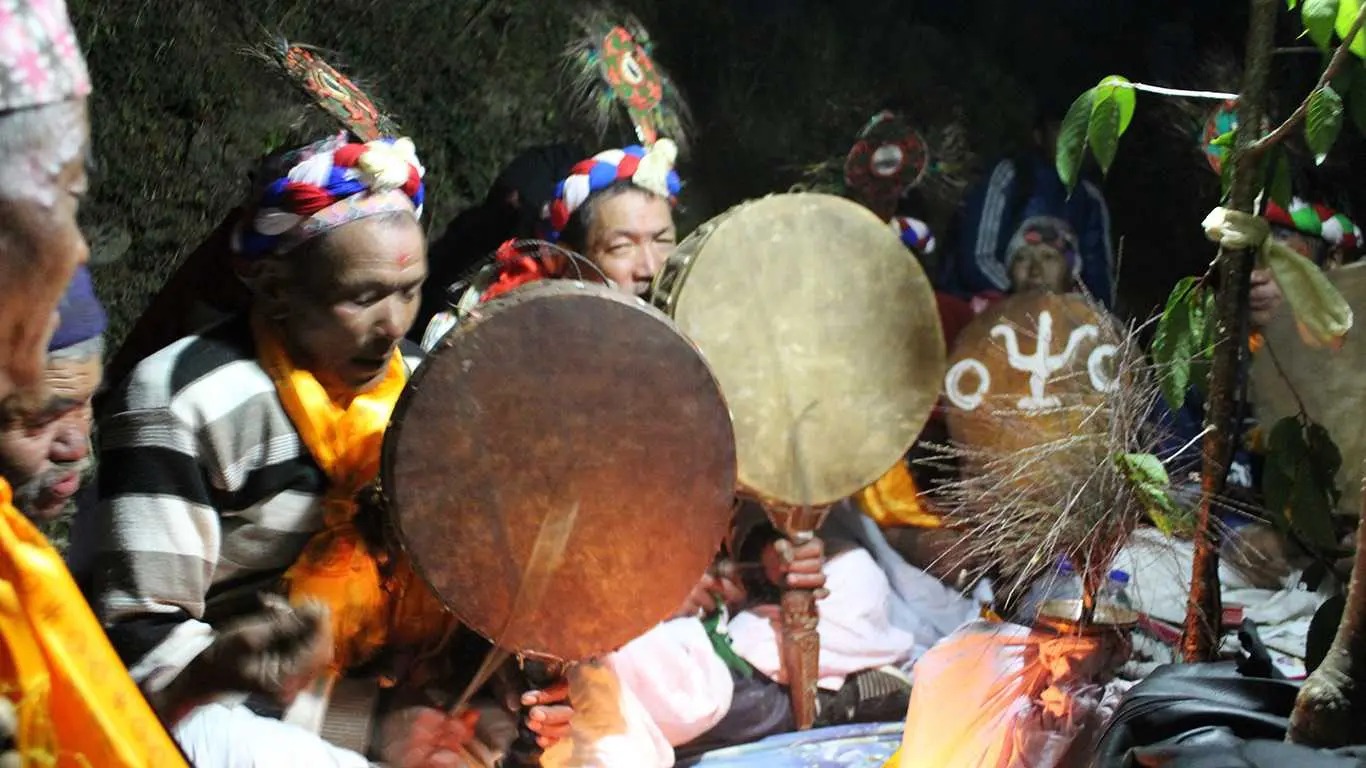
Trekking in Nepal is often associated with the mighty Himalayas, snowcapped peaks, and iconic adventures like the Everest Base Camp Trek or the Annapurna Circuit. However, beyond the conventional trekking trails lies a journey that connects travelers not only with nature but also with the ancient spiritual practices of Nepal’s indigenous communities. This unique adventure is known as the Shamanism Trek, also referred to as the Mundhum Trail Trek or Kirant Culture Trek, a journey that takes trekkers deep into the cultural heartlands of the Kirant people. Unlike traditional treks that focus only on mountain scenery, the Shamanism Trek blends nature, spirituality, and cultural immersion in one unforgettable experience. It is not just about walking from one village to another; it is about engaging with rituals, learning from shamans, and witnessing the centuries-old traditions that still thrive in the remote hills of Nepal.
The Shamanism Trek introduces travelers to the Kirant or Rai people, one of Nepal’s oldest ethnic groups who follow a spiritual belief system rooted in animism, nature worship, and ancestral reverence. Their sacred book, Mundhum, guides the rituals, festivals, and healing practices that shamans perform. Along the trek, you may encounter shamans—locally known as “dhami” or “jhankri”—who perform healing ceremonies, trance dances, and offerings to spirits. This trek allows you to step into a world where the forest is sacred, rivers are protectors, and mountains are divine guardians. It is a rare opportunity to explore how spirituality blends seamlessly with daily life in rural Nepal.
Starting from remote villages in eastern Nepal, the trail leads you through terraced farmlands, rhododendron forests, hidden waterfalls, and ridge-top settlements with panoramic views of Mount Everest, Kanchenjunga, and Makalu. But more than the landscapes, it is the encounters with people and their traditions that make this trek extraordinary. Each village has its own rituals, dances, and festivals where shamans play a central role. During homestay nights, trekkers can sit with locals by the fire, listen to Mundhum recitations, and observe rituals performed to heal illnesses or to bless the community.
What makes the Shamanism Trek even more appealing is its exclusivity. While thousands of trekkers crowd the Everest and Annapurna regions each year, the Shamanism Trek remains off-the-beaten path. This gives travelers the chance to explore authentic Nepal, untouched by mass tourism, and to connect deeply with the spiritual essence of the Himalayas. Whether you are seeking cultural discovery, spiritual awakening, or simply a trek filled with raw authenticity, the Shamanism Trek offers something profoundly unique. It is a pilgrimage into the soul of Nepal, a walk into the world of ancestral wisdom, and a reminder that nature and spirit are inseparably linked.
History and Cultural Background of Shamanism in Nepal
The roots of Shamanism in Nepal date back thousands of years, long before the arrival of Buddhism and Hinduism. Among the Kirant people, shamanic practices are considered sacred traditions passed down through generations. The shamans act as healers, mediators between humans and spirits, and guardians of ancestral knowledge. They perform rituals using drums, chants, animal sacrifices, and trance dances to heal sickness, bless crops, and ensure harmony in the community.
The Shamanism Trek introduces trekkers to these practices by visiting villages where shamans are still respected community leaders. Through storytelling and ritual demonstrations, trekkers gain insight into how shamanism shapes social, spiritual, and environmental values. The trek essentially becomes a living museum of ancient traditions.
Trekking Route and Highlights
The Shamanism Trek, often aligned with the Mundhum Trail, covers around 11 days of walking through eastern Nepal. Some highlights include:
-
Salpa Pokhari – A sacred lake where shamans gather during full moon festivals.
-
Silichung Peak (4,153m) – A pilgrimage site offering breathtaking Himalayan views.
-
Rai, Limbu, and Sherpa villages – Experience diverse cultures, foods, and hospitality.
-
Rhododendron forests and terraced fields – Perfect for nature lovers and photographers.
-
Spiritual ceremonies and rituals – Observe shamans performing ancient practices.
This trek is moderate in difficulty, suitable for trekkers with basic fitness levels.
Best Time to Visit – Weather and Conditions
The best time for the Shamanism Trek is during spring (March to May) and autumn (September to November).
-
Spring: The forests bloom with rhododendrons, weather is mild, and skies are clear. Ideal for photography and festival participation.
-
Autumn: The most popular trekking season with stable weather, crisp mountain views, and major cultural events.
-
Winter (December to February): Trekking is possible but colder at higher altitudes, with snowfall on passes.
-
Monsoon (June to August): Heavy rainfall makes trails slippery and leech-infested, though it is also the greenest season with fewer trekkers.
During peak seasons, shamans also perform community rituals and gatherings, which means trekkers have better chances of witnessing authentic ceremonies.
Why Choose Shamanism Trek?
-
Cultural Depth: Unlike Everest or Annapurna, this trek is more about spirituality than just mountains.
-
Spiritual Experience: Participate in rituals, blessings, and ceremonies.
-
Authenticity: Stay in homestays, not commercial lodges.
-
Scenic Views: Panoramas of Everest, Kanchenjunga, Makalu, and Makalu-Barun National Park.
-
Community Impact: Your trek supports indigenous communities directly.
Preparation and Practical Information
-
Fitness: Moderate fitness is enough; daily walks of 5–6 hours.
-
Permits: Local entry permits are required (arranged via trekking company).
-
Packing: Good boots, warm clothing, rain gear, sleeping bag, and basic first aid.
-
Accommodation: Mostly homestays and basic lodges.
-
Food: Dal Bhat (rice & lentils), millet bread, local vegetables, and organic produce.
-
Cost: Depending on itinerary, around USD 900–1200 for a full package with guide, porter, permits, and meals.
Best Shamanism Trek Company – Lekbesi
For authentic and safe experiences, hiring through a professional trekking agency is highly recommended. Lekbesi, a trusted company, organizes Shamanism Treks with experienced guides and local connections to ensure trekkers not only enjoy the landscapes but also participate in spiritual encounters. Their porters and guides are well-versed in cultural etiquette, making your journey more meaningful.
FAQs About Shamanism Trek in Nepal
1. What is the Shamanism Trek in Nepal?
The Shamanism Trek, also known as the Mundhum Trail Trek or Kirant Culture Trek, is a cultural and spiritual trekking route in eastern Nepal. Unlike commercial treks like Everest Base Camp or Annapurna Circuit, this trek focuses on indigenous traditions, rituals, and shamanic practices of the Kirant, Rai, and Limbu communities. Along the trail, trekkers visit remote villages, sacred lakes, and ritual sites where shamans (locally called dhami or jhankri) perform healing ceremonies, blessings, and trance dances. The trek blends natural beauty with deep cultural immersion. It usually takes around 10–12 days depending on the itinerary and is considered a moderate trek.
2. What makes the Shamanism Trek different from other treks in Nepal?
Most treks in Nepal are known for their mountain views and adventure, but the Shamanism Trek is unique because of its cultural depth. While you will still enjoy breathtaking Himalayan views of Everest, Kanchenjunga, and Makalu, the real highlight is the connection with local shamans and ancient spiritual traditions. Trekkers witness rituals based on the sacred book Mundhum, observe animistic practices, and even take part in blessings or drumming sessions. Unlike crowded trails, this trek is off-the-beaten path, giving visitors authentic experiences in homestays and community lodges. It’s ideal for those seeking spirituality, cultural exploration, and meaningful travel.
3. When is the best time to do the Shamanism Trek?
The best time for the Shamanism Trek is during spring (March–May) and autumn (September–November). Spring brings mild weather, blooming rhododendrons, and community festivals where shamans perform rituals in public gatherings. Autumn is the peak trekking season in Nepal with crystal-clear skies, stable weather, and excellent mountain views. Both seasons are perfect for cultural immersion and comfortable trekking conditions. Winter (December–February) is also possible but colder in higher altitudes, with snow on some ridges. Monsoon (June–August) brings heavy rain, leeches, and muddy trails, making it less favorable, though it is the greenest season with fewer trekkers. For the best cultural and weather conditions, spring and autumn are highly recommended.
4. Is the Shamanism Trek difficult?
The Shamanism Trek is considered a moderate trek. Trekkers typically walk 5–6 hours a day on trails that pass through forests, farmlands, and ridges. The highest point, Silichung Peak (4,153m), requires some stamina but no technical climbing skills. Compared to Everest Base Camp or Annapurna Circuit, the Shamanism Trek is less physically demanding, making it suitable even for beginners with basic fitness. The real challenge lies in the remote nature of the trek—accommodation is simple (mostly homestays), trails are less developed, and weather can sometimes be unpredictable. With proper preparation and a good guide, the trek is accessible to anyone with average fitness.
5. Do I need a guide for the Shamanism Trek?
Yes, hiring a local guide is highly recommended for the Shamanism Trek. The trails are less commercialized and not always well-marked. Guides not only help with navigation but also serve as cultural interpreters. Since the trek is deeply spiritual, having a guide ensures you can respectfully participate in rituals, understand the significance of shamanic practices, and communicate with locals. Agencies like Lekbesi provide professional guides who are familiar with the Mundhum traditions, Kirant culture, and local etiquette. Independent trekking is possible, but without a guide you may miss the cultural richness that makes this trek special.
6. Can trekkers participate in shamanic rituals?
Yes, trekkers are often invited to observe or even take part in certain non-restricted shamanic rituals. Shamans may perform blessings for trekkers, drum ceremonies, or communal rituals during festivals. However, some rituals are private or sacred, and visitors are expected to respect cultural boundaries. Participation usually involves receiving a blessing, watching healing dances, or joining communal prayers. Photography is sometimes restricted, so always ask permission. These interactions are what make the Shamanism Trek unique, as they offer a rare opportunity to engage with living spiritual traditions that have been preserved for centuries.
7. What kind of accommodation and food can I expect on the trek?
Accommodation on the Shamanism Trek is primarily homestays and basic lodges. Unlike Everest or Annapurna where tea houses are developed, here trekkers stay in local homes, which adds authenticity to the cultural experience. Rooms are simple but clean, often with shared facilities. Meals are homemade and mostly organic, featuring Dal Bhat (rice, lentils, vegetables), millet bread, potatoes, local greens, and sometimes meat dishes. Because you stay with local families, you get to enjoy traditional cooking methods and flavors unique to the Kirant culture. While the food is simple, it is filling and nutritious, offering a real taste of Nepali rural life.
9. How much does the Shamanism Trek cost?
The cost of the Shamanism Trek depends on whether you go independently or through an agency. On average, a full package costs around USD 2000–3000per person, which includes guide, porter, permits, meals, accommodation, and transport. Independent trekkers may spend less, but hiring guides and porters is strongly recommended. Porters usually cost 22 USD/day, porter-guides 25 USD/day, and guides 30 USD/day. The cultural value of this trek far outweighs the cost, as you are directly supporting local families and preserving ancient traditions.
10. Why is the Shamanism Trek important for Nepal?
The Shamanism Trek plays a vital role in preserving indigenous culture, supporting local economies, and promoting sustainable tourism. By choosing this trek, visitors contribute directly to rural communities that do not benefit from mainstream trekking routes. This helps local families improve their livelihoods while ensuring that Kirant and Rai traditions remain alive for future generations. For trekkers, it provides a once-in-a-lifetime chance to experience a side of Nepal that goes beyond mountains—an immersion into spiritual and ancestral wisdom.
The Shamanism Trek in Nepal is a journey into the soul of the Himalayas, blending trekking, spirituality, and cultural immersion. For travelers seeking something beyond the mainstream trails, this trek offers a rare chance to experience living traditions, ancient wisdom, and authentic community life. With the guidance of professional agencies like Lekbesi, the trek is not only safe but deeply transformative.

